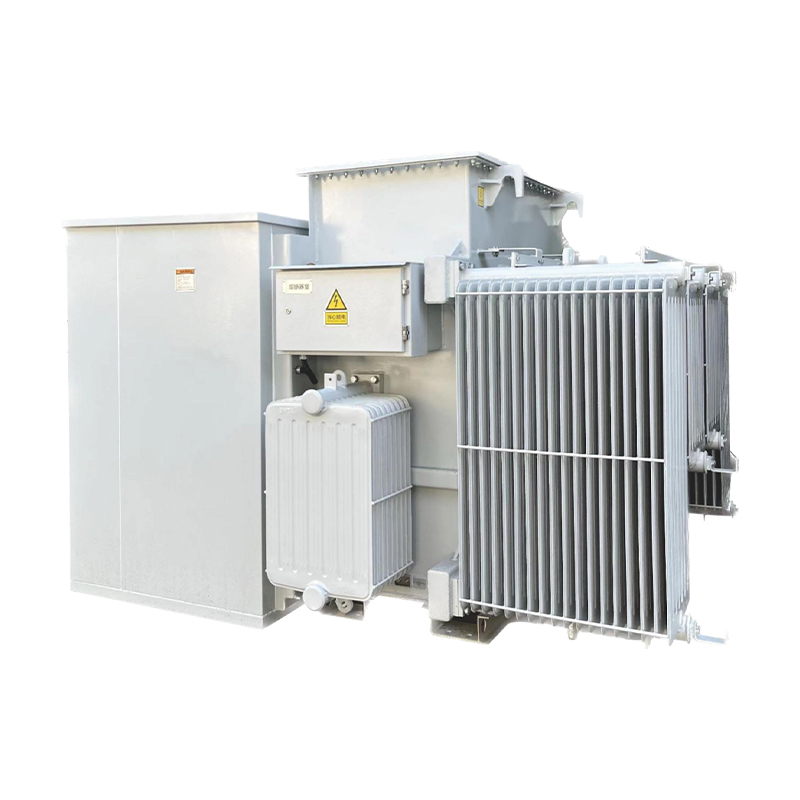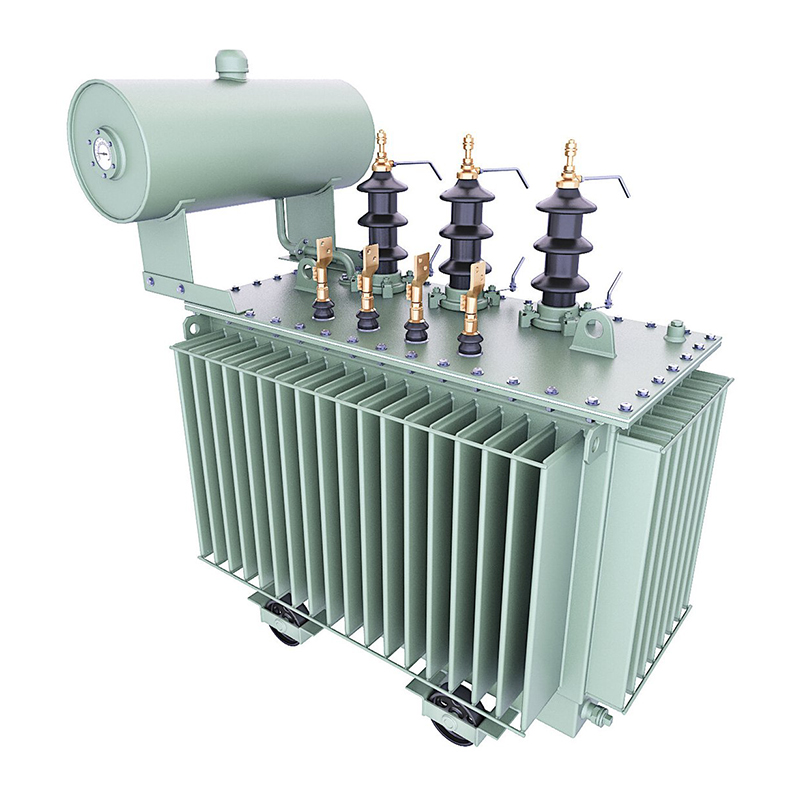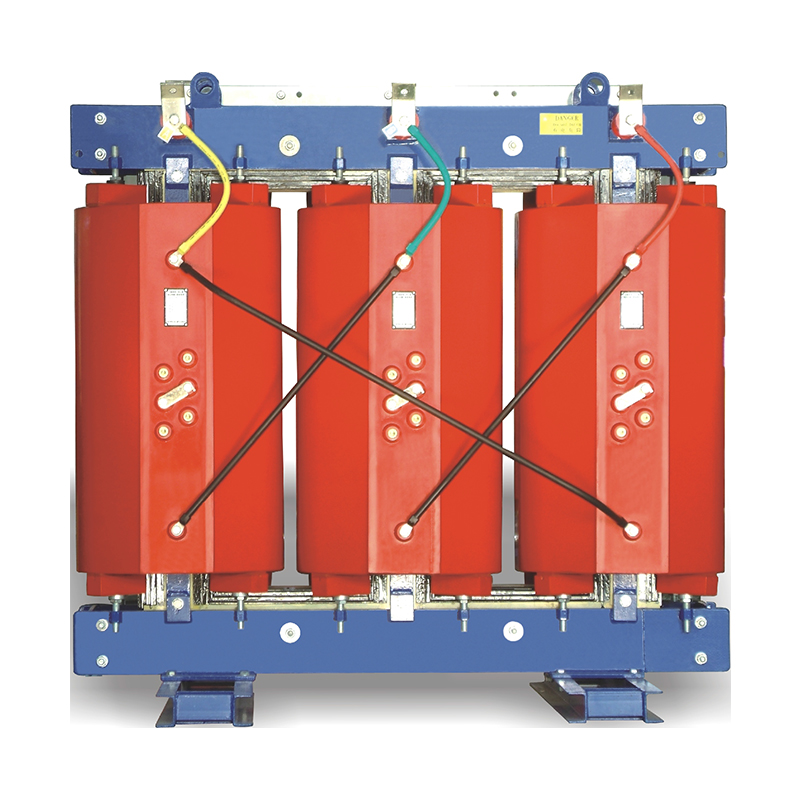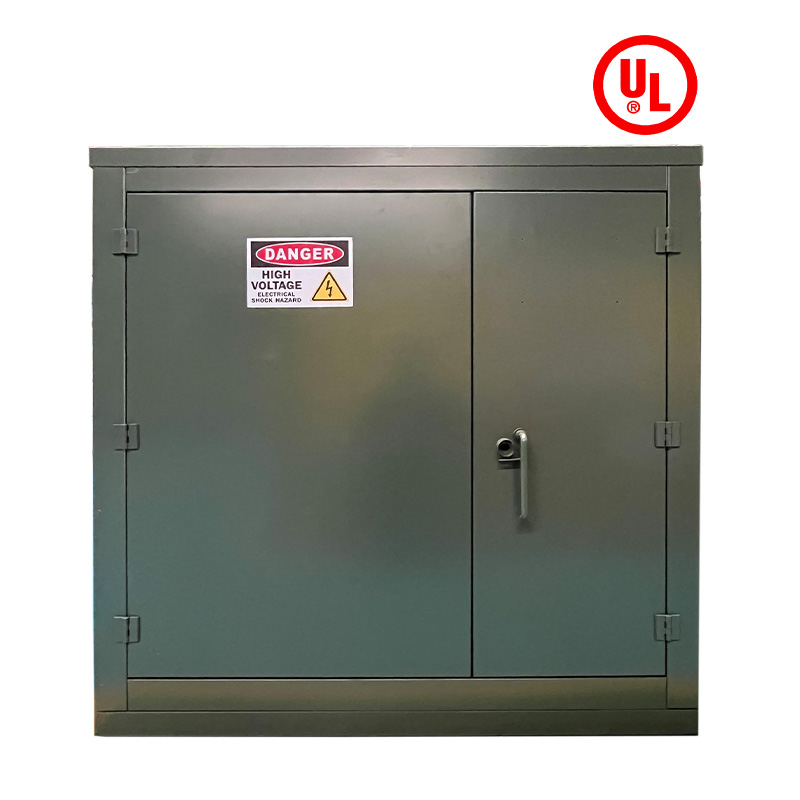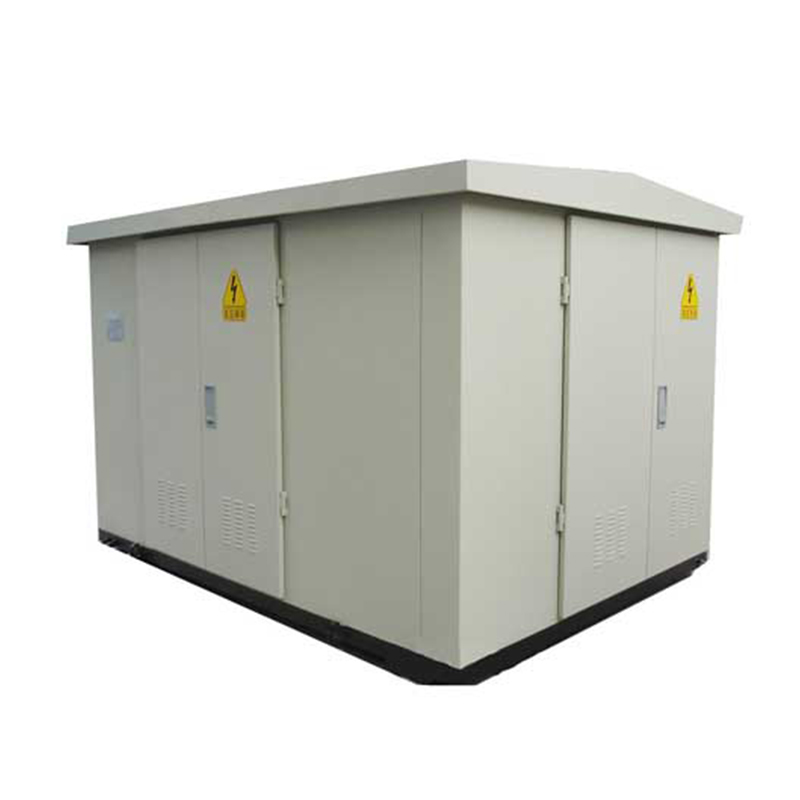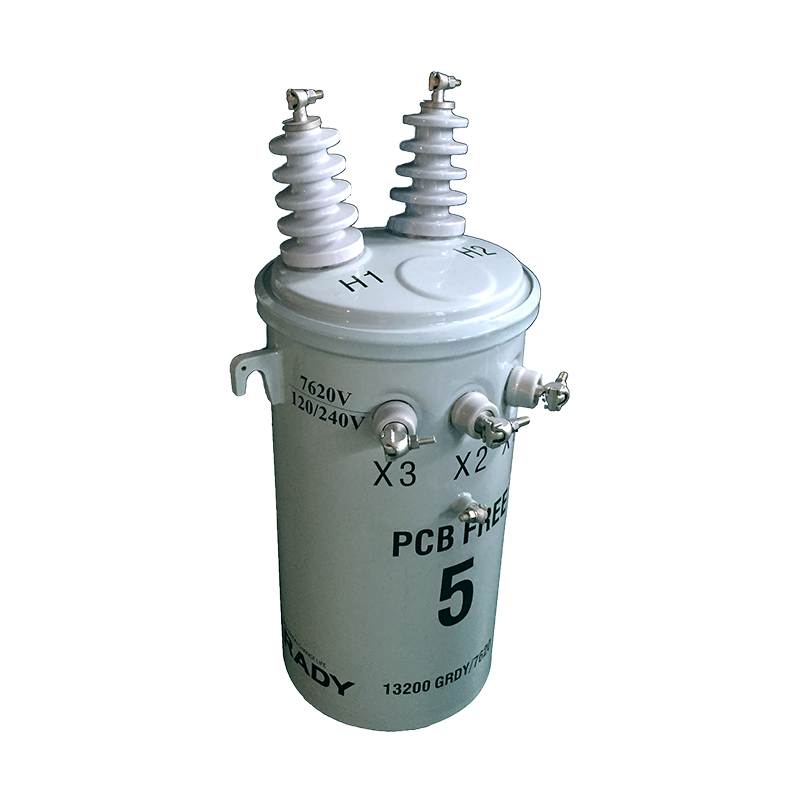Requirements for Anti-Harmonic Capability of Power Transformers in Renewable Energy Grids
Introduction
The rapid integration of renewable energy sources into electrical power systems has fundamentally transformed the operational landscape of power transformers. Unlike conventional power generation systems that produce relatively clean sinusoidal waveforms, renewable energy systems introduce significant harmonic distortion through their power electronic interfaces. This harmonic pollution presents unprecedented challenges for power transformers, which must now operate under non-sinusoidal conditions that can substantially impact their performance, reliability, and lifespan.
The proliferation of inverter-based renewable energy sources, including solar photovoltaic systems, wind turbines, and energy storage systems, has intensified harmonic distortion levels in modern electrical grids. These harmonics, defined as frequency components that are integer multiples of the fundamental frequency, can cause transformers to experience increased losses, overheating, insulation stress, and mechanical vibrations. The situation is further complicated by the variable and intermittent nature of renewable energy generation, which creates time-varying harmonic profiles that challenge traditional transformer design approaches.
As renewable energy penetration continues to increase globally, power transformers must be designed and specified with enhanced anti-harmonic capabilities to ensure reliable operation in this new environment. This requires a comprehensive understanding of harmonic generation mechanisms, their effects on transformer performance, and the technical requirements for mitigating these impacts. The development of appropriate standards, design criteria, and testing procedures for transformers operating in harmonic-rich environments has become critical for maintaining grid reliability and power quality.
Harmonic Generation in Renewable Energy Systems
Power Electronic Converter Characteristics
Renewable energy systems rely heavily on power electronic converters for grid connection and power conditioning. These converters, including inverters, rectifiers, and DC-DC converters, operate through high-frequency switching processes that inherently generate harmonic distortion. The pulse-width modulation (PWM) techniques commonly used in these converters produce characteristic harmonics at frequencies related to the switching frequency and its multiples.
Solar photovoltaic systems typically employ voltage source inverters that convert DC power from solar panels to AC power suitable for grid connection. These inverters generate harmonics at frequencies determined by the switching strategy, with common harmonic orders including 5th, 7th, 11th, and 13th harmonics. The harmonic spectrum can vary significantly depending on the inverter topology, control algorithm, and operating conditions.
Wind energy systems present additional complexity due to their variable-speed operation and different generator technologies. Doubly-fed induction generators (DFIGs) and full-power converter systems each produce distinct harmonic signatures. DFIG systems, which use partially-rated converters, generally produce lower harmonic levels compared to full-power converter systems, but their harmonic characteristics vary with wind speed and generator loading.
Harmonic Amplification and Resonance
The integration of renewable energy systems can create conditions for harmonic amplification through resonance phenomena. The extensive cable networks in renewable energy installations, particularly in large solar farms and offshore wind systems, introduce significant capacitance that can create resonant conditions when combined with the inductive characteristics of transformers and other grid components.
Harmonic resonance can lead to voltage amplification at specific frequencies, potentially causing transformer overexcitation and increased losses. This phenomenon is particularly problematic when the resonant frequency coincides with characteristic harmonics generated by renewable energy converters. The resulting harmonic overvoltages can exceed transformer insulation ratings and cause premature failure of arresters and other protective devices.
Impact of Harmonics on Transformer Performance
Increased Losses and Heating
Harmonic distortion significantly increases transformer losses through several mechanisms. The most direct impact is the increase in copper losses due to harmonic currents flowing through the windings. Since transformer losses are proportional to the square of the current, even relatively small harmonic currents can contribute substantially to total losses. The skin effect and proximity effect become more pronounced at higher harmonic frequencies, further increasing AC resistance and associated losses.
Iron losses in the transformer core also increase under harmonic conditions. The eddy current losses are particularly affected, as they are proportional to the square of the frequency. For harmonic components at the 5th, 7th, and higher orders, the eddy current losses can be 25, 49, or more times greater than for the fundamental frequency component of the same magnitude.
The cumulative effect of these additional losses is increased transformer heating, which can lead to accelerated insulation aging and reduced operational life. Studies have shown that harmonic losses can account for approximately 0.6% of total network losses in distribution systems with high renewable energy penetration. This additional heating must be considered in transformer design and specification to prevent thermal overload conditions.
Insulation Stress and Aging
Harmonic voltages and currents subject transformer insulation to additional electrical stress beyond that experienced under sinusoidal conditions. The peak voltage stress can be significantly higher than the fundamental component alone, particularly when multiple harmonic components are present and their peaks align. This increased stress can lead to partial discharge activity and accelerated insulation degradation.
The presence of harmonics also affects the distribution of voltage stress across the winding insulation. Higher frequency components experience different impedance characteristics, potentially concentrating stress in specific portions of the winding. This non-uniform stress distribution can create weak points that are more susceptible to failure over time.
Temperature rise due to harmonic losses compounds the electrical stress by accelerating the chemical aging processes within the insulation system. The combined effect of increased electrical stress and thermal stress significantly reduces the expected operational life of transformer insulation systems.
Mechanical Effects and Noise
Harmonic currents produce magnetic forces within transformer windings that oscillate at harmonic frequencies. These forces can cause mechanical vibrations and acoustic noise, particularly at frequencies that correspond to mechanical resonances of the transformer structure. The cumulative effect of these vibrations can lead to mechanical fatigue of winding conductors, loosening of clamping structures, and eventual mechanical failure.
The audible noise generated by transformers under harmonic conditions can exceed regulatory limits and create environmental concerns, particularly in urban areas or near residential properties. The harmonic components of magnetic forces often fall within frequency ranges that are more noticeable to human hearing, compounding the noise issue.
Anti-Harmonic Design Requirements
K-Factor Rating System
The K-factor rating system has been developed specifically to address transformer operation under harmonic loading conditions. This rating indicates a transformer's ability to handle harmonic currents without exceeding specified temperature limits. The K-factor is calculated based on the harmonic spectrum of the expected load and represents the additional heating effect of harmonic currents compared to purely sinusoidal operation.
Transformers with higher K-factor ratings are designed with enhanced thermal capabilities and reduced losses under harmonic conditions. This typically involves larger conductor sizes to reduce DC resistance, transposed conductors to minimize skin effect, and improved cooling systems to handle additional heat generation. Core designs may also be optimized to reduce harmonic-related iron losses.
The selection of appropriate K-factor ratings requires detailed analysis of the expected harmonic environment. Renewable energy applications often require K-factors of 4 to 9, depending on the specific technology and system configuration. Solar installations with string inverters typically require lower K-factors than systems with central inverters, while wind farms may require higher ratings due to the variable nature of their harmonic generation.
Harmonic Loss Factor (FHL) Considerations
The harmonic loss factor (FHL) provides another method for quantifying the impact of harmonics on transformer losses. This factor accounts for both copper losses and iron losses under harmonic conditions, providing a more comprehensive measure than K-factor alone. FHL calculations consider the frequency-dependent nature of transformer losses and provide a basis for design optimization.
Transformers designed for high FHL environments incorporate features such as larger winding conductors to reduce resistance, special core materials with lower high-frequency losses, and enhanced cooling systems. The design process must also consider the interaction between different harmonic orders and their combined effect on total losses.
Insulation Coordination Requirements
Transformers operating in harmonic-rich environments require enhanced insulation coordination to withstand the increased electrical stress. This includes consideration of peak voltage stresses that can occur when harmonic components superimpose on the fundamental voltage waveform. The insulation system must be designed to handle these peak stresses without experiencing partial discharge or accelerated aging.
Bushing selection and surge arrester coordination become critical in harmonic environments. The presence of harmonics can affect arrester operation and may require selection of arresters with different characteristics than those used in traditional applications. The insulation coordination must also consider the possibility of harmonic resonance conditions that could lead to voltage amplification.
Testing and Standards Development
Harmonic Testing Procedures
Traditional transformer testing procedures are inadequate for evaluating performance under harmonic conditions. New testing methodologies have been developed to assess transformer capability under realistic harmonic environments. These tests apply controlled harmonic currents and voltages to the transformer while monitoring temperature rise, losses, and other performance parameters.
Harmonic testing typically involves the application of multiple frequency components simultaneously to simulate real-world conditions. The test setup must be capable of generating the required harmonic spectrum while maintaining accurate control of individual harmonic magnitudes and phase relationships. Temperature monitoring during these tests requires special consideration due to the different heating patterns associated with harmonic losses.
Standards Evolution
Existing transformer standards are being updated to address harmonic operation requirements. IEEE C57.110 provides guidelines for establishing transformer capability under harmonic loading conditions, while IEC standards are being developed to address the specific requirements of renewable energy applications. These standards provide methodologies for calculating derating factors and establishing appropriate design margins.
The development of renewable energy-specific standards recognizes the unique characteristics of harmonic generation from different renewable technologies. Wind and solar systems have distinct harmonic signatures that require different approaches to transformer specification and testing. Standards development organizations are working to provide guidance that addresses these technology-specific requirements.
Mitigation Strategies and Solutions
Passive Filtering Approaches
Passive harmonic filters represent one of the most common approaches to mitigating harmonic problems in renewable energy systems. These filters use combinations of inductors, capacitors, and resistors to create low-impedance paths for harmonic currents, preventing them from flowing through transformers and other sensitive equipment.
Tuned filters are designed to provide low impedance at specific harmonic frequencies, typically the 5th, 7th, 11th, and 13th harmonics that are commonly generated by power electronic converters. The design of these filters must consider the possibility of harmonic resonance and ensure that the filter does not create new harmonic problems while solving existing ones.
Broadband filters provide attenuation across a range of harmonic frequencies and are particularly useful in applications with variable harmonic spectra. These filters are often used in renewable energy installations where the harmonic content varies with operating conditions.
Active Filtering Technologies
Active harmonic filters use power electronic converters to inject compensating currents that cancel harmonic components in the system. These filters can provide dynamic compensation that adapts to changing harmonic conditions, making them particularly suitable for renewable energy applications with variable generation profiles.
The integration of active filtering capabilities into transformer designs represents an emerging approach to harmonic mitigation. These systems use auxiliary windings and power electronic converters to provide active harmonic compensation directly at the transformer level.
Transformer Design Optimization
Advanced transformer designs incorporate features specifically intended to minimize harmonic-related problems. These include the use of amorphous core materials that exhibit lower losses under harmonic conditions, specialized winding configurations that reduce harmonic current effects, and integrated cooling systems designed to handle the non-uniform heating patterns associated with harmonic losses.
Phase-shifting transformers can be used to cancel specific harmonic components through appropriate winding connections and phase relationships. This approach is particularly effective in large renewable energy installations where multiple transformers can be coordinated to provide harmonic cancellation.
Economic Considerations and Future Outlook
Cost-Benefit Analysis
The economic impact of harmonic-related transformer problems in renewable energy systems can be substantial. Premature transformer failures, reduced operational efficiency, and increased maintenance requirements all contribute to higher lifecycle costs. The investment in harmonic-resistant transformer designs and mitigation systems must be evaluated against these potential costs.
Studies have shown that the additional cost of K-factor rated transformers typically ranges from 15% to 30% above standard transformer costs, depending on the required rating and specific design features. However, this additional investment is often justified by improved reliability and extended operational life in harmonic-rich environments.
Technology Development Trends
The continuing evolution of renewable energy technologies is driving development of new approaches to harmonic management. Wide bandgap semiconductor devices, such as silicon carbide (SiC) and gallium nitride (GaN) devices, enable higher switching frequencies and more sophisticated control algorithms that can reduce harmonic generation at the source.
Advanced modulation techniques and control strategies are being developed to minimize harmonic generation from renewable energy converters. These approaches can significantly reduce the harmonic burden on transformers and other grid components, potentially reducing the requirements for harmonic-resistant designs.
Conclusion
The integration of renewable energy sources into electrical power systems has created new challenges for power transformer design and operation. The harmonic distortion introduced by power electronic converters requires enhanced anti-harmonic capabilities that go beyond traditional transformer specifications. The development of appropriate design criteria, testing procedures, and standards is essential for ensuring reliable transformer operation in renewable energy environments.
The K-factor rating system, harmonic loss factor considerations, and enhanced insulation coordination provide the foundation for specifying transformers capable of operating reliably under harmonic conditions. However, the variable and complex nature of harmonic generation from renewable energy sources requires continued development of more sophisticated approaches to transformer design and specification.
The economic benefits of investing in harmonic-resistant transformer designs are clear when considering the costs of premature failures and reduced operational efficiency. As renewable energy penetration continues to increase, the importance of appropriate transformer specification for harmonic environments will only grow. The continued development of mitigation technologies, advanced materials, and improved design approaches will be essential for maintaining grid reliability and power quality in the renewable energy era.
Power transformers must evolve to meet the challenges of harmonic-rich environments while maintaining the reliability and efficiency that modern power systems demand. This requires collaboration between transformer manufacturers, renewable energy developers, and system operators to ensure that appropriate technical solutions are developed and implemented effectively.
Relatenews
- Requirements for Anti-Harmonic Capability of Power Transformers in Renewable Energy Grids 2025-09-16 16:08:00
- Construction and Application of Intelligent Operation and Maintenance Platform for Power Transformers 2025-09-16 16:04:00
- Architecture Design of IoT-Based Monitoring System for Power Transformers 2025-09-05 15:27:00
- Judgment Standards and Oil Change Process for Power Transformer Oil Deterioration 2025-09-05 15:23:00
- Design and Mechanical Strength Verification of Short-Circuit Withstand Capability for Power Transformers 2025-09-05 15:19:00
- The Role of Power Transformers in Voltage Regulation within Power Systems 2025-08-25 08:14:00
- Environmental Regulations and Technical Measures for Power Transformer Noise Control 2025-08-25 08:12:00
- The Application of Big Data Analytics in Power Transformer Fault Prediction 2025-08-25 08:11:00





